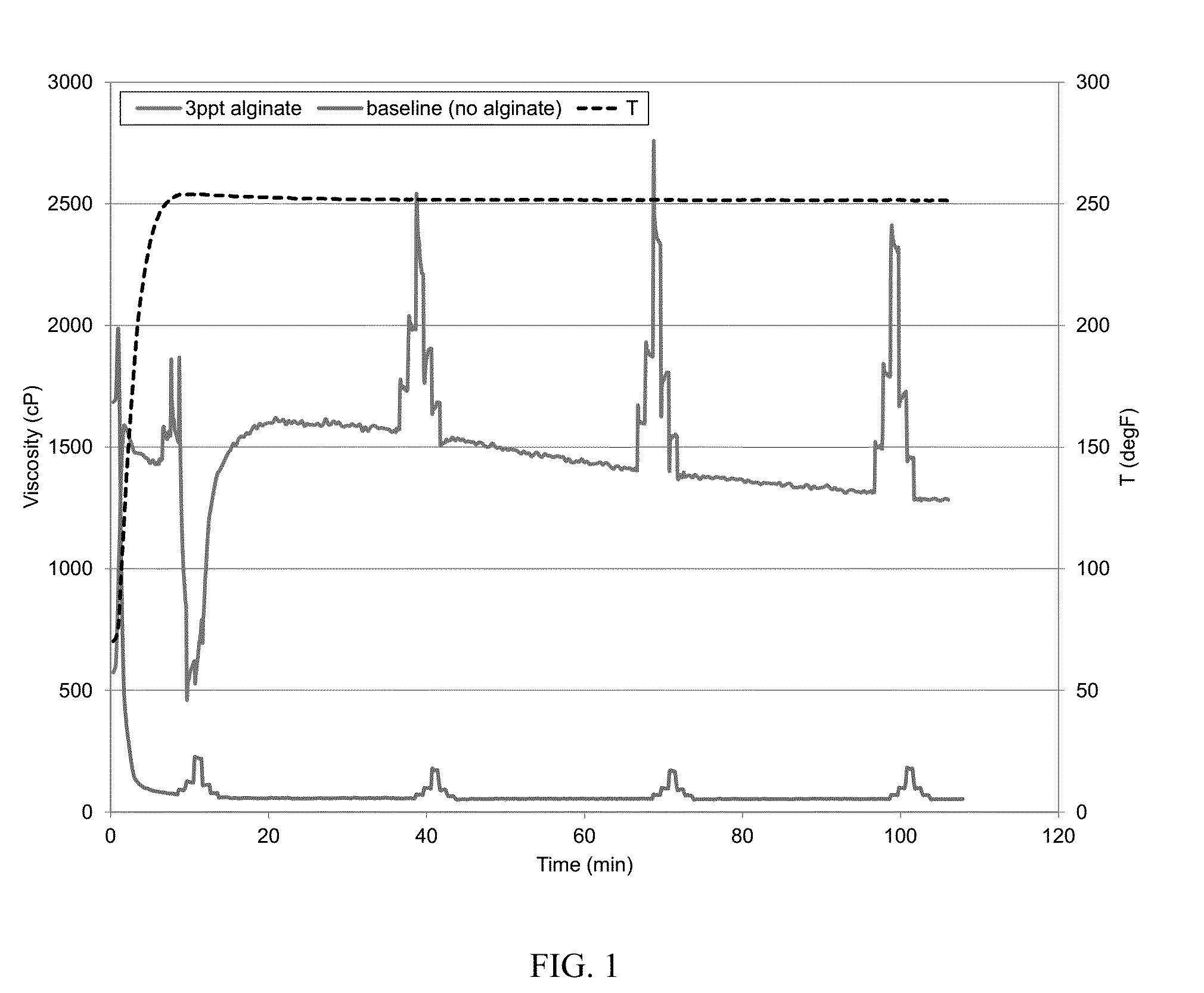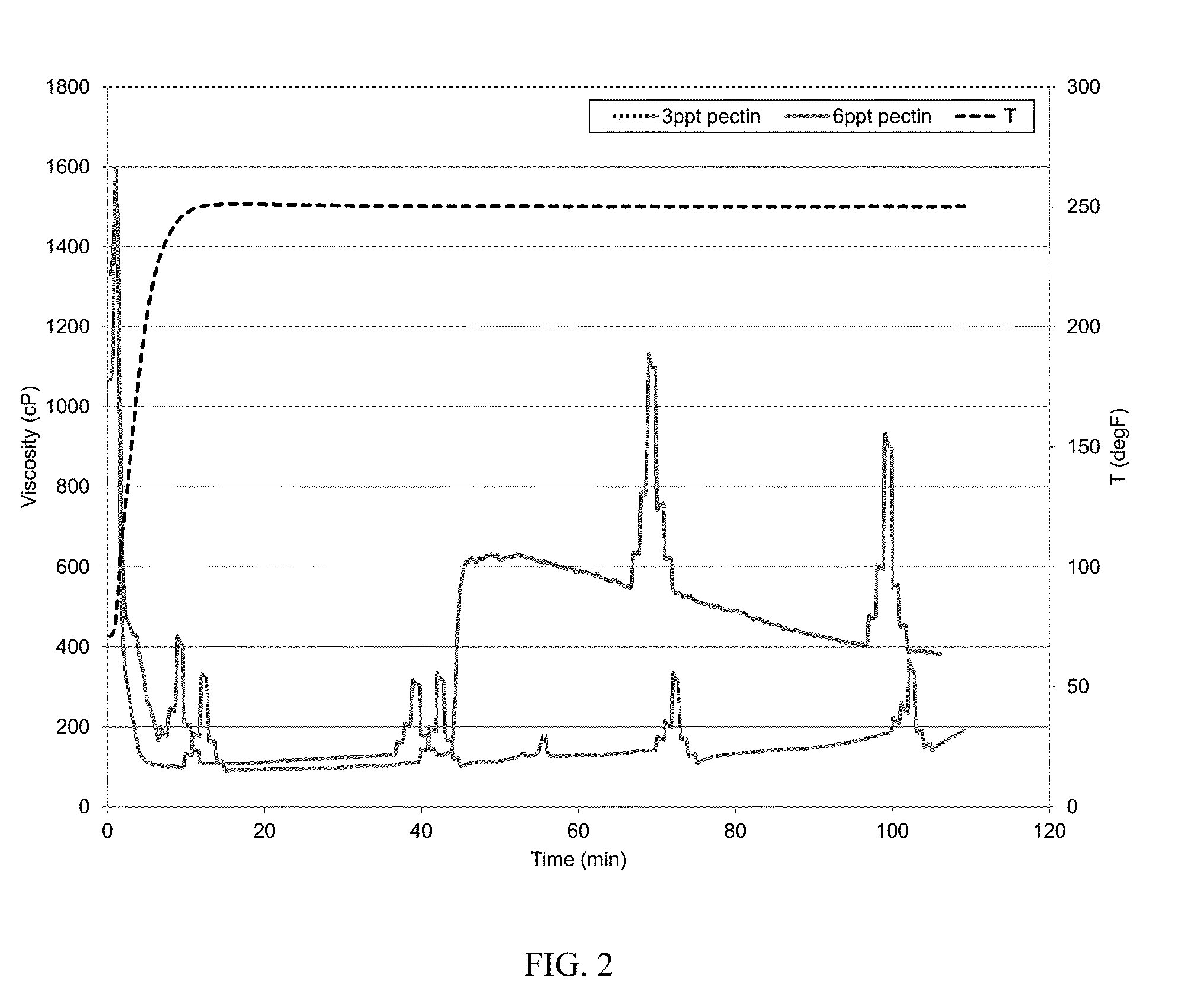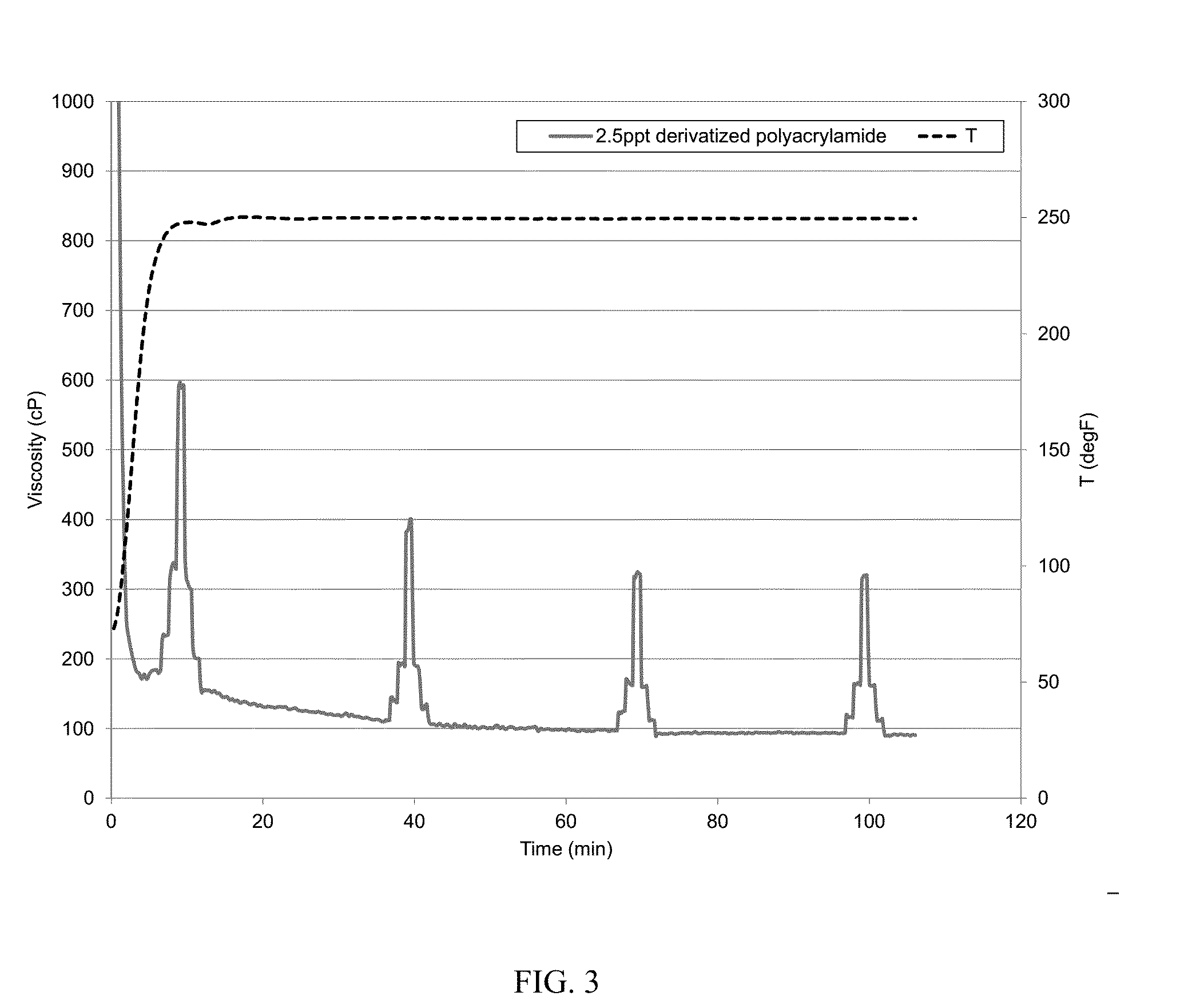Method of stabilizing viscosifying polymers in well treatment fluid
a technology of viscosification polymers and well treatment fluids, which is applied in the direction of fluid removal, wellbore/well accessories, chemistry apparatus and processes, etc., can solve the problems of increasing the cost of wellbore operation, and achieve the effect of enhancing the productivity of hydrocarbons
- Summary
- Abstract
- Description
- Claims
- Application Information
AI Technical Summary
Benefits of technology
Problems solved by technology
Method used
Image
Examples
example 1
[0060]An aqueous baseline fluid was prepared with deionized water, 200 parts per million (ppm) calcium cations (in the form of calcium chloride), 30 pounds per thousand gallons (30 ppt; 1 ppt equals to about 0.12 g / L) carboxymethyl guar (CMG), 0.3 gallons per thousand gallons (0.3 gpt; 1 gpt equals to 1 mL / L) of a potassium buffer, 1 gpt sodium thiosulfate solution as high-temperature stabilizer, and 1.1 gpt zirconium crosslinker. CMG was allowed to fully hydrate in water. The pH of the gel was about 10.2 at room temperature. The viscosity at 250° F. was measured with a Chandler 5550 viscometer, following the API RP 39 schedule. The results are shown in FIG. 1. The fluid viscosity quickly dropped to about 60 cP at 14 minutes and to about 50 cP at 44 minutes, indicating the damage caused from the calcium cations in water. The baseline was the same for the following other examples unless otherwise indicated.
[0061]To show that alginate could mitigate hard water damage, a second fluid w...
example 2
[0062]The baseline was the same as that in Example 1. The baseline was prepared with deionized water, 200 ppm calcium cations, 30 ppt CMG, 0.3 gpt potassium buffer, 1 gpt sodium thiosulfate solution, and 1.1 gpt zirconium crosslinker. The viscosity at 250° F. was similarly measured with a Chandler 5550 viscometer. The baseline fluid viscosity dropped to about 60 cP at 14 minutes and to about 50 cP at 44 minutes. To show that pectin could mitigate hard water damage, two fluids were made identical to the baseline fluid but further containing 3 ppt and 6 ppt, respectively, powdered pectin (CAS: 9000-69-5). The CMG and pectin were hydrated together. The polymers were allowed to fully hydrate in water. The pH of the gel was about 10.2 at room temperature. The viscosity was similarly measured and is illustrated in FIG. 2. The addition of 3 ppt of the pectin enhanced the viscosity by about 100% or more when compared with the baseline, while the addition of 6 ppt of the pectin enhanced the ...
example 3
[0063]The baseline was the same as that in Example 1. The baseline was prepared with deionized water, 200 ppm calcium cations, 30 ppt CMG, 0.3 gpt potassium buffer, 1 gpt sodium thiosulfate solution, and 1.1 gpt zirconium crosslinker. The viscosity at 250° F. was similarly measured. The baseline fluid viscosity dropped to about 60 cP at 14 minutes and to about 50 cP at 44 minutes. To show that the derivatized polyacrylamide could mitigate hard water damage, a fluid identical was made to the baseline fluid but further containing about 2.5 ppt derivatized polyacrylamide (the AMPS polyacrylamide, with 20% AMPS). The CMG and polyacrylamide were hydrated together. The polymers were allowed to fully hydrate in water. The pH of the gel was about 10.3 at room temperature. The viscosity was similarly measured and is illustrated in FIG. 3. The addition of 2.5 ppt of derivatized polyacrylamide enhanced the viscosity by about 100% or more when compared with the baseline.
PUM
 Login to View More
Login to View More Abstract
Description
Claims
Application Information
 Login to View More
Login to View More - R&D
- Intellectual Property
- Life Sciences
- Materials
- Tech Scout
- Unparalleled Data Quality
- Higher Quality Content
- 60% Fewer Hallucinations
Browse by: Latest US Patents, China's latest patents, Technical Efficacy Thesaurus, Application Domain, Technology Topic, Popular Technical Reports.
© 2025 PatSnap. All rights reserved.Legal|Privacy policy|Modern Slavery Act Transparency Statement|Sitemap|About US| Contact US: help@patsnap.com



